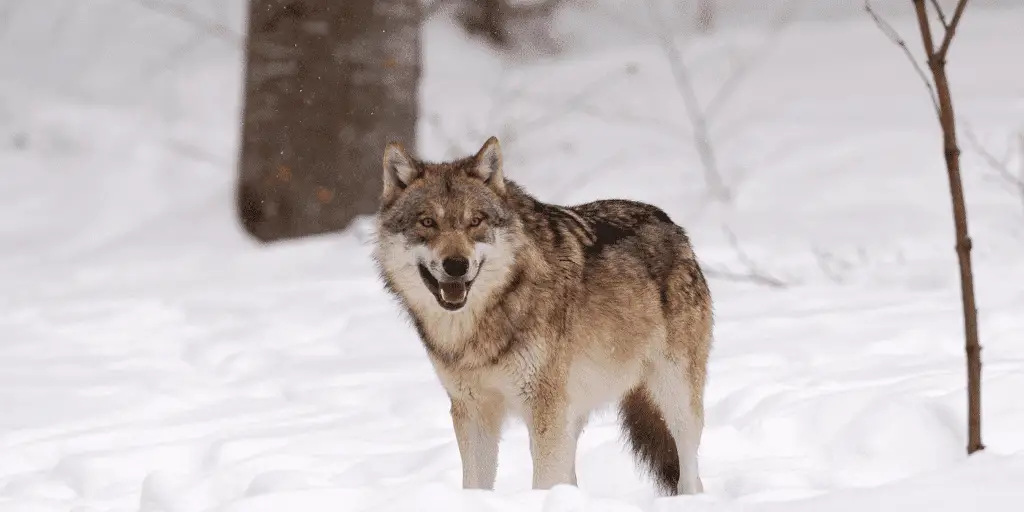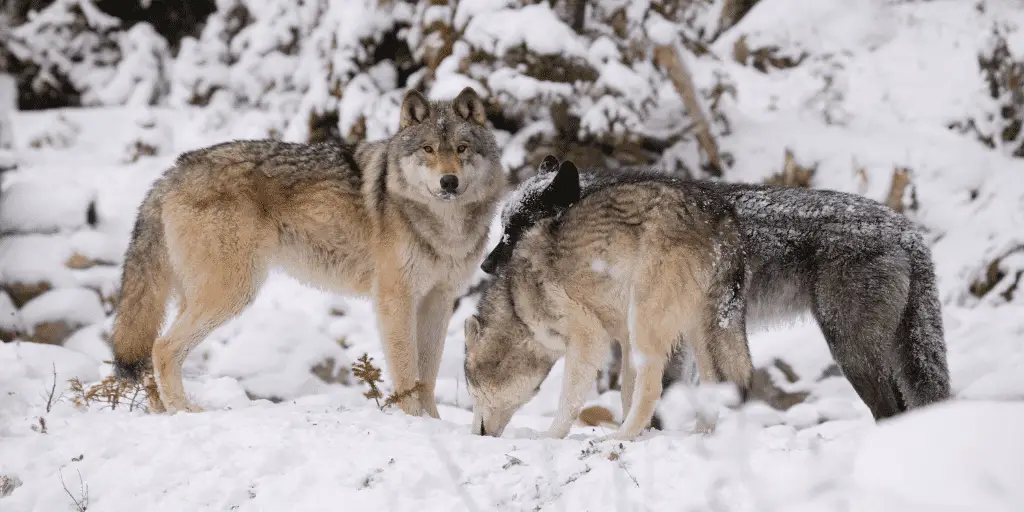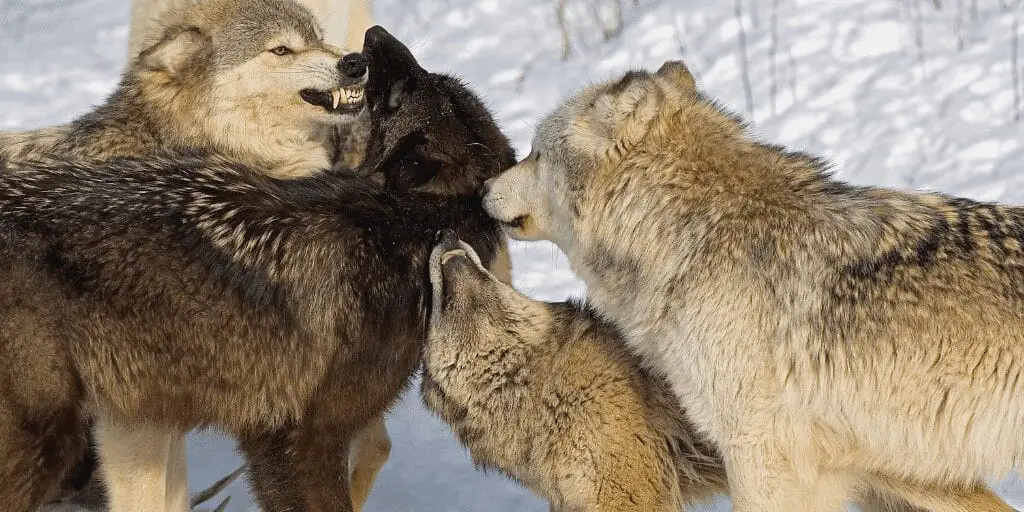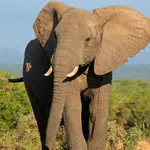Discover the hidden role of whiskers in the wolf’s world, a key to their survival often unnoticed by the human eye. Unveiling the secrets of these tactile sensors, this article explores how they guide wolves through the dark forests, aid in intricate social interactions, and adapt to ever-changing environments.
Key Takeaways:
- Wolves possess whiskers, known as vibrissae, which are composed of keratin and serve as a crucial sensory tool, allowing them to detect subtle changes in their environment, aiding in navigation and hunting, especially in conditions of low visibility.
- The whiskers of wolves are deeply rooted in their skin and are surrounded by a blood-filled capsule and nerves, making them highly sensitive to vibrations and air currents, which inform the wolf about nearby obstacles, prey, or other animals.
- Evolution has shaped the whiskers of wolves to be finely tuned instruments that provide an advantage in survival, with variations among species reflecting adaptations to their specific habitats and the unique challenges they face.
- Whiskers play a significant role in the social interactions of wolves, with their positioning and movement contributing to the communication of emotions and intentions within the pack, aiding in the maintenance of social structures.
- The growth and regrowth of wolf whiskers follow a cycle similar to other mammalian hair, with factors such as genetics, health, and environment influencing the rate of growth and shedding, ensuring wolves retain their sensory capabilities.
Do Wolves Have Whiskers?
Yes, wolves have whiskers, which are sensitive tactile hairs called vibrissae, crucial for their sensory perception and environmental interaction.
| Aspect | Details |
| Anatomy | Made of keratin, located on the muzzle, cheeks, and above the eyes. Each is deeply rooted in a follicle surrounded by a blood-filled capsule for heightened sensitivity. |
| Sensory Functions | Capable of detecting air currents, indicating obstacles or prey nearby. Essential for navigation in low visibility, aiding in hunting and social interactions. |
| Evolutionary Adaptation | Developed to enhance survival capabilities, such as prey detection and navigation. Variations exist among species, indicating habitat-specific adaptations. |
| Importance in Wolves’ Lives | Key for hunting accuracy, navigating through challenging environments, and facilitating social bonding within packs through body language. |
Do Wolves Have Whiskers?

Anatomy of Wolf Whiskers
A wolf, its gaze intense and focused, as it moves through the forest. Now, picture the delicate whiskers that frame its face, often overlooked yet crucial to its survival. These whiskers, or vibrissae, are composed of keratin, the same protein that makes up human hair and nails.
Strategically placed on the muzzle, cheeks, and above the eyes, they serve as an extension of the wolf’s sensory system. Each whisker is rooted deeply in the skin in a follicle that is richly innervated and surrounded by a blood-filled capsule. This sophisticated arrangement allows the whiskers to detect even the slightest change in the environment.
The density and length of these tactile hairs can vary among species like the gray wolf or the Arctic wolf, reflecting adaptations to their unique habitats. For instance, wolves in dense forests may have a different whisker profile compared to those in open tundra, each optimized for environmental challenges.
These variations are not just for show; they are finely tuned instruments that enhance the wolf’s ability to navigate and hunt, making them a key feature in the animal’s adaptability.
Sensory Functions of Wolf Whiskers
Wolf whiskers are far more than just facial adornments; they are vital to the wolf’s tactile sensory perception. Each whisker is incredibly sensitive, capable of detecting subtle changes in air currents, which can indicate the presence of obstacles, prey, or other animals nearby.
This sensory input is crucial when visibility is low, such as at night or in dense underbrush, allowing wolves to move with confidence and precision.
When a whisker touches an object or is stimulated by air movement, it sends a signal to the wolf’s brain. This information is processed at lightning speed, enabling the wolf to make rapid decisions that could mean the difference between catching a meal or evading danger.
The whiskers’ role in the wolves’ sensory apparatus is so integral that without them, a wolf’s ability to interact with its environment would be significantly impaired.
Evolutionary Perspective on Wolf Whiskers
Whiskers are not a random feature; they are a testament to the power of evolution. Over millions of years, as wolves adapted to a myriad of environments and hunting techniques, their whiskers evolved to meet the demands of survival.
These tactile hairs likely provided an evolutionary advantage, aiding in the detection of prey and navigation through challenging landscapes, which in turn increased the wolves’ chances of reproduction and survival.
Comparing wolves to other mammals with whiskers, such as big cats or rodents, offers insights into the evolutionary pressures that have sculpted these sensory tools. While the basic function of whiskers remains consistent across species, the specific adaptations in wolves highlight the unique challenges they faced and overcame.
This evolutionary perspective allows us to see wolf whiskers as a dynamic feature, honed by natural selection to support the wolf’s role as a top predator in its ecosystem.
The Role of Whiskers in Wolves’ Lives

A wolf moving silently through a snowy forest. Its ears are tuned to the faintest sounds, its nose to the subtlest scents, but it’s the whiskers that often lead the way. These tactile hairs, or vibrissae, are more than just facial adornments; they’re finely tuned sensory tools.
As a wolf stalks its prey, the whiskers detect vibrations and air currents, painting a picture of the unseen world. This allows the wolf to sense the movement of a vole beneath the snow’s surface or the quiet approach of a bear, even in the absence of light.
In dense underbrush, where vision is limited, whiskers act like radar, helping wolves avoid obstacles and navigate with confidence. They are essential for these apex predators, giving them an edge in the complex game of survival.
Whiskers and Social Interactions
Now, let’s shift focus from the solitary hunter to the pack, where whiskers play a surprisingly different role. Wolves are deeply social creatures, and their whiskers contribute to the nuanced language of the pack. A wolf’s whiskers might bristle during a display of dominance or slick back in a moment of submission.
These subtle shifts in body language, often overlooked by human observers, are clear signals to other wolves. Whiskers help maintain the delicate balance of power and affection that defines wolf social structures. They are instruments of emotion, as vital to pack harmony as they are to individual survival.
Whiskers in Sensing Environmental Changes
Beyond hunting and socializing, whiskers serve as environmental barometers. Wolves inhabit some of the most challenging terrains on Earth, from the frozen Arctic to the rugged mountains. Their whiskers can detect the drop in pressure that precedes a storm or the warmth that signals a thaw.
This sensory input can prompt a wolf to seek shelter or adjust its hunting strategy, perhaps signaling the pack to move to higher ground or to hunt before a storm makes conditions too harsh. The whiskers’ ability to sense these environmental shifts is a testament to the wolf’s adaptability, allowing it to thrive in a world that is constantly changing.
How Do Wolf Whiskers Work?
Biomechanics of Whisker Sensing
A wolf navigating through the dense forest; it’s not just relying on its keen sense of sight or smell, but also on the delicate, yet powerful, whiskers that adorn its face. These whiskers, or vibrissae, are more than just hairs; they’re highly sensitive tactile sensors.
Each whisker is rooted deeply in the wolf’s skin, surrounded by a rich network of nerves and muscles, allowing it to move with precision. The structure of these whiskers is both flexible and durable, enabling them to bend without breaking and vibrate in response to the slightest touch or change in air currents.
When a wolf’s whisker brushes against an object or is stirred by the breeze, it vibrates, and these vibrations are like messages that are sent directly to the wolf’s brain.
Whiskers can detect various stimuli, from the rough texture of tree bark to the gentle pressure of a snowflake landing on its snout. These tactile encounters are not just fleeting sensations; they’re critical data points that help the wolf understand its immediate surroundings.
Neural Pathways and Signal Processing
Now, let’s delve into the wolf’s brain, where the magic of sensory processing happens. Each whisker is like a direct hotline to a specific part of the wolf’s brain. This area, known as the somatosensory cortex, is a hub of neural activity where tactile information is decoded.
The whisker’s vibrations are translated into electrical signals that travel along these neural pathways, painting a picture of the environment in the wolf’s mind.
This intricate system allows the wolf to detect the position of objects, their size, and even their texture, without needing to see them. It’s like having a mental map that is constantly updated with every twitch of a whisker. This sensory input is crucial for the wolf, especially in the dark or when navigating through complex terrains where visibility is limited.
Whiskers and Behavioral Responses
The information that whiskers provide is not just for passive observation; it directly influences how wolves behave. For instance, when a wolf detects the movement of a small animal through its whiskers, it can trigger an immediate hunting response. Similarly, if the whiskers sense danger, like the close proximity of a predator or a harmful object, the wolf can quickly retract and avoid the threat.
Whiskers also play a role in social interactions among wolves. They can sense the presence and movements of other wolves, which is essential during pack activities or when establishing dominance.
Over time, the sensory feedback from whiskers helps wolves adapt their behavior to their environment, ensuring their survival and facilitating complex social dynamics within the pack. These tactile tools are indispensable for wolves, seamlessly integrating sensory perception with instinctual and learned behaviors.
The Regrowth of Wolf Whiskers

Whisker Growth Cycle in Wolves
A wolf pup being born in the wild, its tiny face soon to sprout the first of many whiskers. These whiskers, or vibrissae, begin their journey as simple follicles, much like the hair on our own heads. As the pup grows, these follicles mature and extend into the thick, tactile hairs we recognize as whiskers.
The growth cycle of these whiskers is fascinating, as they go through phases of growth, rest, and shedding, much like other mammalian hair. However, the rate at which wolf whiskers grow and shed can be influenced by a variety of factors, including genetics, the wolf’s overall health, and the environment it inhabits.
For instance, wolves living in harsher climates may experience different growth rates compared to those in milder regions. This continuous cycle of renewal allows wolves to maintain their sensory edge, adapting to their environments with each new set of whiskers.
Impact of Whisker Loss and Regeneration
Whiskers are more than just facial hair for wolves; they are a critical component of their sensory system, helping them navigate the darkness and detect the slightest changes in their surroundings.
When a wolf loses whiskers, whether through natural shedding or injury, it’s akin to us losing our sense of touch in our fingertips. Despite this temporary setback, wolves have an incredible ability to compensate for the loss, relying more heavily on their other senses until their whiskers grow back.
The biological process that triggers the regrowth of whiskers is robust, ensuring that these essential tools are only gone temporarily.
Typically, it can take several weeks for a wolf’s whiskers to fully regenerate, during which time their sensory capabilities are somewhat diminished but not entirely incapacitated. This regenerative ability highlights the resilience of wolves and the vital role whiskers play in their survival.
Comparative Analysis of Whisker Regrowth in Canines
When we look at the family of canines, which includes everything from the majestic wolf to our beloved domestic dogs, we see a tapestry of evolutionary stories. Whisker regrowth in wolves is a process honed by the demands of the wild, whereas in domestic dogs, it’s been shaped by thousands of years of living alongside humans.
Some domestic dogs may experience faster or slower whisker regrowth due to selective breeding and the diverse roles they play in human society. By comparing the regrowth patterns of whiskers in wolves with those of other canines, we gain insight into the effects of domestication and the underlying genetic mechanisms at play.
This comparative analysis not only sheds light on the fascinating differences and similarities within the canine family but also reflects the complex interplay between nature, nurture, and the hand of human influence.
Whiskers and Wolf Behavior

Whiskers in Communication and Social Bonding
A group of wolves, their fur bristling in the cold air, eyes locked in silent conversation. It’s not just their body posture or vocalizations that speak volumes; their whiskers are also part of the dialogue.
These tactile hairs, or vibrissae, are more than just facial adornments; they are nuanced instruments of communication. As wolves interact, their whisker movements and positions can indicate a range of emotions and intentions.
A relaxed pack member might have a soft facial expression with whiskers fanned out gently, signaling ease and contentment, while an assertive wolf’s whiskers might push forward, complementing an intense gaze and dominant stance.
These subtle cues are read and interpreted by other pack members, playing a critical role in maintaining the complex social fabric of wolf society. Whiskers, thus, are not mere physical traits but tools that enhance social cohesion and understanding among these intelligent creatures.
Whiskers in Exploratory and Defensive Behaviors
Wolves are creatures of the wild, and their survival hinges on their ability to interact with a dynamic environment. Whiskers serve as their tactile radar, guiding them through the night or dense underbrush.
When a wolf navigates unfamiliar terrain, its whiskers sweep forward, probing for obstacles and alerting to the proximity of objects. In the hunt, these sensitive hairs detect the slightest movements, helping to pinpoint prey even before it’s visible.
And when danger looms, a wolf’s whiskers can sense the subtle changes in air currents, signaling an approaching threat. These sensory experiences trigger a cascade of behaviors, from the exploratory to the defensive, showcasing the whisker’s role as a versatile sensory organ that informs a wolf’s actions and decisions in the wild.
Impact of Whiskers on Wolf Pup Development
From the moment they are born, wolf pups are equipped with a set of tools to help them navigate the world, and whiskers are among the first to be used. These tactile hairs are more than just feelers; they are the pups’ first teachers.
As they stumble and bumble around their den, their whiskers brush against their siblings and surroundings, sending a stream of information to their developing brains. This tactile feedback helps them learn about their environment, establish bonds with their littermates, and understand the body language of adult wolves.
Whiskers are integral to their sensory and social development, laying the groundwork for the survival skills they’ll need as they grow. They help the pups to decipher their world and find their place within the pack, ensuring that as they reach adulthood, they are well-equipped to thrive in the complex social structure of wolf life.
The Evolutionary Significance of Whiskers in Wolves
Whiskers as Evolutionary Adaptations
A wolf, silently moving through a dense forest at night. Its eyes may be sharp, but in the darkness, vision is limited. Here’s where whiskers come into play. These tactile hairs, or vibrissae, have evolved as critical sensory tools, allowing wolves to detect the slightest changes in their environment.
Whiskers are so finely tuned that they can pick up on subtle air currents, providing information about the size, shape, and speed of nearby objects, which is invaluable when hunting or navigating through the underbrush.
The development of whiskers in wolves is a result of selective pressures that favored individuals with better sensory capabilities. In the pitch black of night or when stalking prey, having whiskers could mean the difference between a successful hunt and starvation.
Over countless generations, wolves with more sensitive whiskers may have had a better chance of surviving and passing on their genes, leading to the refined whisker system we see in today’s wolves.
Comparative Evolution of Whiskers in Mammals
Whiskers aren’t unique to wolves; they’re a widespread feature among mammals, each adapted to their own way of life. Seals, for example, have whiskers that can detect fish in the darkest, murkiest waters.
Rodents use their whiskers to feel their way through the tightest spaces without the need for light. These examples show how whiskers have evolved in different directions to meet the demands of various habitats and lifestyles.
By looking at the diversity of whiskers in the mammalian kingdom, it becomes clear that these sensory hairs are a prime example of nature’s ingenuity. They demonstrate how a simple structure can be adapted in so many ways to help different species thrive in their unique ecological niches. For wolves, their whiskers are perfectly suited for a life of stealth and endurance in the wild.
Genetic and Molecular Basis of Whisker Development
Diving deeper into the science, the development of whiskers boils down to genetics and molecular biology. Specific genes are responsible for the growth of whiskers, kicking into gear during the embryonic stage to form whisker pads.
Proteins and growth factors come into play, determining the characteristics of each whisker, from how long and thick it grows to its level of sensitivity.
Understanding the genetic underpinnings of whisker development in wolves sheds light on the complexity of evolution. It’s not just about the visible traits that help an animal survive; it’s also about the intricate dance of genes and proteins that create those traits.
This genetic blueprint is what allows wolves to have the precise type of whiskers they need to be top predators in their environment, demonstrating the remarkable interplay between an organism’s genetic makeup and the world it lives in.
Comparison with Domestic Dogs

Morphological Differences in Whiskers
When you look closely, you’ll notice that wolves and domestic dogs have some pretty interesting differences in their whiskers. These aren’t just random variations; they’re the result of how each species has adapted to their unique way of life.
Wolves, for instance, have whiskers that are generally longer, thicker, and arranged in a more orderly pattern compared to many domestic dogs. This isn’t just for show – these robust whiskers enhance the wolf’s sensory capabilities, which are crucial for survival in the wild.
Domestic dogs, on the other hand, have been selectively bred for a variety of traits, and their whiskers reflect this diversity. Some breeds have short, fine whiskers, while others may have them long and wiry.
The selective breeding process has focused on traits that are desirable to humans, which may not necessarily align with the sensory needs of a wild canine. This has led to a fascinating array of whisker types among different dog breeds, each with its own set of sensory capabilities.
Sensory Capabilities: Wolves vs. Dogs
Diving into the sensory world of canines, it’s clear that whiskers are more than just facial hair – they’re a key part of how wolves and dogs perceive their surroundings.
Wolves rely heavily on their whiskers for navigating the complex wilderness, detecting prey, and communicating with other wolves. Their whiskers are fine-tuned to pick up subtle changes in air currents, helping them to detect and respond to their environment with precision.
Domestic dogs, while still possessing these sensory tools, may not rely on their whiskers to the same extent. The cozy life of a pet doesn’t require the same level of environmental awareness that a wolf needs.
However, whiskers still play a role in how dogs navigate their world, sense nearby objects or beings, and even how they express emotions. The difference lies in the degree of reliance and the types of sensory input that are most critical for their daily lives.
Behavioral Significance of Whiskers in Domestication
Whiskers are more than just sensory organs; they’re also a window into the behaviors of canines. In domestic dogs, the sensory input from whiskers can influence how they interact with their human families, other pets, and their environment. For example, a dog’s whiskers can help it avoid bumping into furniture in a dimly lit room or play a role in the delicate dance of canine social interactions.
In contrast, the life of a wolf is filled with challenges that require a keen sense of the environment, and their whiskers are a vital part of meeting those challenges. From hunting to establishing social hierarchy, whiskers help convey body language and detect the proximity of other pack members or potential threats.
The behavioral significance of whiskers in domestication is a testament to the adaptability of canines, showcasing how changes in their living conditions have led to shifts in the way they use their sensory equipment.








